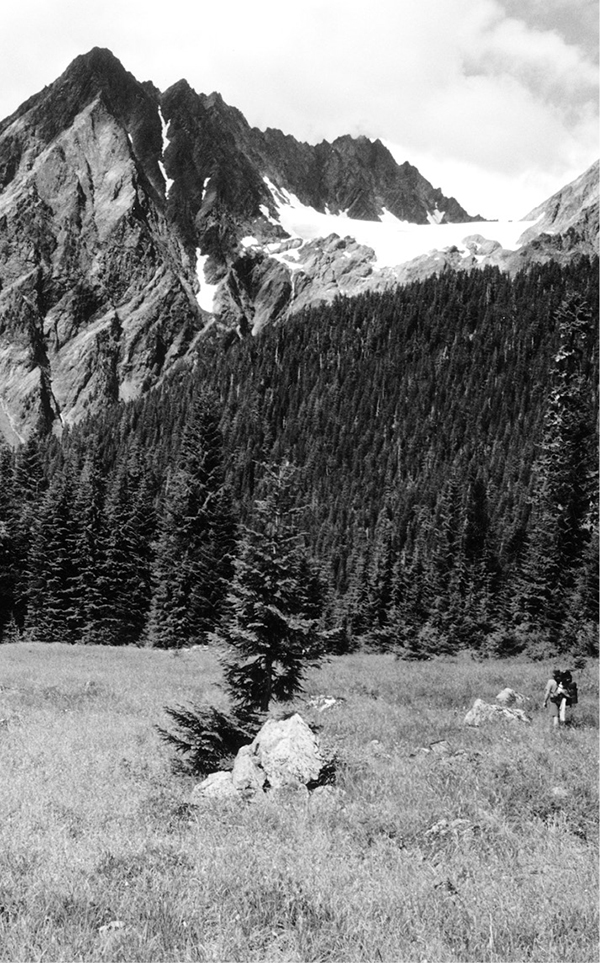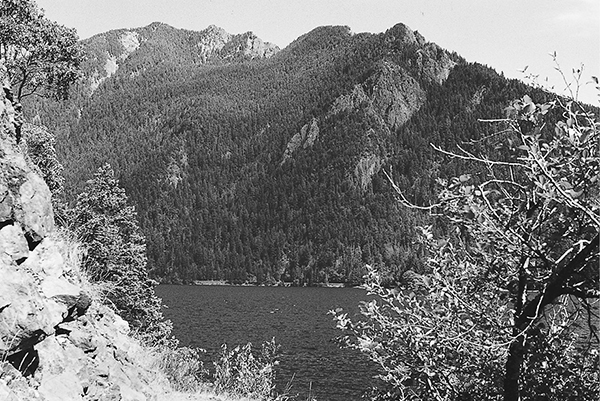
Mount Jupiter and Constance Peak, as seen on the Jupiter Ridge hike
Sol Duc–Lake Crescent
This northern fringe of the Olympic Mountains is dominated by heavily forested peaks. The low basins were originally carved by glaciers and now bear the drainages of the Lyre and Sol Duc Rivers. Sol Duc means “sparkling waters,” and this great stream is born in an area of tremendous geothermal activity. Waters heated by molten magma rise through faults in the Juan de Fuca Plate, leaking to the surface at Sol Duc Hot Springs. These waters have been harnessed in swimming pool form at a full-scale resort within the park.
Lake Crescent is one of the primary attractions of the area. This large body of water is clear and cold, surrounded by imposing peaks. This lake attained its current size when a landslide blocked its eastern outlet, and the water level rose until it poured over the northern lip of the basin to form the Lyre River. This new outlet stream was too turbulent to admit the passage of sea-run rainbow and cutthroat trout that inhabited the lake, and these isolated stocks evolved into the Beardslee and Crescenti trout, respectively.
There are ranger stations near Sol Duc Hot Springs (which is open only three to four days per week) and on Barnes Point on the south shore of Lake Crescent (which does not offer backcountry permits). The Sol Duc Hot Springs Resort, Lake Crescent Lodge, and Log Cabin Resort provide lodgings within the national park, and there are campgrounds near the hot springs and at the western end of Lake Crescent. An entrance fee is charged at the Sol Duc Hot Springs Road. The Fairholm general store at the western end of Lake Crescent is the only nearby source of supplies.

Mount Jupiter and Constance Peak, as seen on the Jupiter Ridge hike

Mount Storm King and Lake Crescent from the Spruce Railway Trail